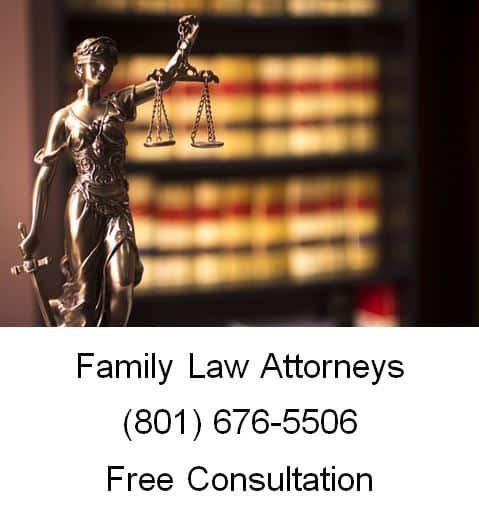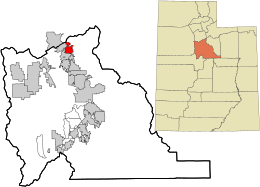
In a Utah family law court case, the time before trial is crucial. Everyone needs to understand their roles and what is going to happen in the courtroom. Consult an experienced Alpine Utah family lawyer. The attorney will explain the court process to you.
Depending on the court, your case may be placed on the docket (calendar) anywhere from three months to one year in advance of the trial date. The judge’s docket will have a number of potential trials set for the same time in some priority order. Delays are common for a variety of reasons. Perhaps more witnesses need to be deposed, or settlement negotiations are close to resolution. Some judges are sympathetic to the need for continuances.
Others hold tight to scheduled deadlines to keep their dockets moving. Either way, you must prepare for trial even before you know the exact trial date. Take time off from your busy schedule and discuss your case with your Alpine Utah family lawyer.
Developing the Trial Theme
A plausible and convincing trial theme is an important factor in winning a case. The theme provides the jury with a framework to decide the case and gives your family law attorney the skeleton upon which to develop a strategy for winning.
You can actively participate in the trial preparation process. One way to accomplish this is to develop a complete list of questions that you want to be asked on direct examination. Discuss the list with your Alpine Utah family lawyer. The lawyer will tell you the question he intends to ask you and the answers he expects. If you believe you won’t be in a position to answer any of them, let your attorney know so that he can prepare some other question.
Request a mock cross-examination if it is not offered in advance. During the mock cross- examination, an experienced Alpine Utah family lawyers will attempt to push you to the boundaries of your comfort zone. Establish your boundaries and do not cross them. This exercise will instill confidence in you and ensure that you are prepared.
Changing Your Deposition
After the deposition, you and your Alpine Utah family lawyer review what went well at the deposition and what did not. The sooner after the deposition, the better, so that the details are still fresh in everyone’s mind. This review may very well result in the need for further investigation or analysis. It may also result in new information or data to be considered. Write it down. Develop a checklist for the actions that need to be accomplished before the trial date.
Motions
Following the pleadings and the discovery phase of the case, the lawyers representing each side in the litigation may file a variety of motions either to avoid trial or to narrow the scope of issues to be tried. Some motions seek the exclusion of evidence or testimony, including an expert’s opinion (the Daubert motion). Others, such as a motion for summary judgment, ask the court to dismiss the case on legal grounds when the material facts are not in dispute. The use of motions can be an efficient and cost-effective way to determine the relative strength of the opposing positions.
Understanding the Judge
Know and understand the judge. Especially in light of Daubert and related cases, the judge is responsible for determining the reliability and the relevance of expert testimony and other evidence. In executing this charge, the judge will determine just how broad-or narrow-testimony can be. Judges have two different approaches in this regard. Some will allow everything, whether or not it is directly material, on the theory that this will be fair to both sides and in the hope that the jury will determine the relevance. Others will restrict what is admissible and will narrow the focus in order to expedite the trial. Both approaches can be effective, but it is important to understand which will be employed and to tailor testimony accordingly.
It is also helpful to think of the judge as part of the jury. If effective and convincing, your testimony will have an impact on the judge. At times, the judge may ask questions, and at the end of the trial it is the judge who delivers the jury instructions, based on the evidence and opinions presented at trial. The jury will then decide the case based on those instructions. A judge who understands the case may be more effective in transmitting clear instructions, which typically leads to a more just outcome.
Opening Statements
The trial begins with the presentation of the opening statement. Attorneys for the plaintiff in a family law dispute usually are the first tell the jury what they believe the evidence will prove. The defendant’s attorney will then make an opening statement; however, in some cases, the defense attorney has the option of delaying this opening statement until after the plaintiffs have completed presenting their case. The opening statements reveal to the judge and jury the opposing story lines. In the opening statement, the lawyer outlines for the jury the issues involved in the case and the evidence to be presented that will firmly establish the validity of the claim or the defense. It is also an opportune time to introduce and explain in general terms any expert testimony to be used in the case. The lawyer should explain to the jury the evidence to be presented, show how it will be presented, provide a brief overview of the qualifications of the expert(s) who will be testifying, and describe in broad terms the basis for the expert opinions.
Exhibits can be used to better illustrate points made during the opening statement and can be far more effective and convincing than oratory alone. The opening statement also provides an opportunity to address any potential weaknesses in expert testimony to be offered. By introducing such weaknesses during the opening statement, the lawyer has an opportunity to preempt the opposing side’s argument concerning that testimony, while building credibility with the jury. Opening statements are not considered to be evidence and are, in theory, intended simply to acquaint the jurors with the nature of the case. In reality, however, the importance of the opening statement cannot be overstated. The opening statement is the first opportunity for the lawyers representing the opposing sides to explain the basis for their cases and to establish the theme for the trial. The opening statement sets the tone for the trial. Fortunately or not, this first impression often profoundly influences the final verdict.
Direct Examination
Direct examination is the heart of the case. It consists of questions posted to a lay or expert witness to elicit facts that corroborate a party’s theory of the case. Direct examination is also the best opportunity to present the facts and reinforce the theme that will convince the jury and win the case. Unlike in depositions, where witnesses are advised to be brief and responsive, at trial witnesses have the opportunity to expand their answers. The goal of direct examination is to educate the judge and jury; therefore, it is imperative that direct testimony be understandable, interesting, and persuasive.
Effective direct examination must tell the entire story in a logical, cogent, and memorable way. Good direct examination should boil down all of the information and research to the essential elements, including any expert opinions. Direct testimony should not only hit the high points and refute any weak points of the case. It should also identify any weaknesses so that on cross-examination the jury has already heard the issue and is impressed by the candor of the witness in revealing facts that may be brought up by the other side.
It is important to remember that jurors may have relatively limited attention spans. The members of the jury will be making a great effort to listen to, understand, and remember the testimony in the case but can become fatigued by information overload. Visual exhibits should be used whenever possible to illustrate key points, and common phrases and terms should be used repeatedly throughout the trial to emphasize the important points and images you wish to convey to the jury. It is wise, therefore, to limit direct expert testimony to hours, not days. Such a time limit requires discipline, organization, practice, and a great deal of preparation on the part of both the expert and the attorney.
On the day you are scheduled to testify, you should be at the court well in advance of the time you are scheduled to be on the witness stand. It is important to understand that the scheduled time to testify may, and more often than not will, change. Judges often change timetables without prior notice. You should be prepared to wait until it is time to testify.
The first few minutes of direct examination are critical in establishing your relationship with the jurors. Make it a friendly time by establishing eye contact and by talking directly to them. Sit up and smile. Speak loudly and clearly and avoid jokes or anecdotes. If the judge interrupts the proceedings, listen to what he or she has to say and then proceed as instructed. It is never a good idea to speak when the judge is speaking.
On cross-examination, be polite to opposing counsel, but protect yourself and your reputation. You do have the right to answer fully any question that the opposing attorney asks. He may try to cut you off after your “yes” or “no” response. Break in and indicate you have more to say, and explain your answers. If necessary, with the permission of the court, step down from the witness box to point out an exhibit or chart that reinforces your point. Don’t be afraid to answer “I don’t know” or “I can’t remember.” Ask for clarification of questions you may not fully understand. Ask for definitions of terms you are unclear about to ensure that you and the examining attorney re talking about the same thing. Examine and re-read all documents before referring to or testifying about them. It is more impressive to be thorough than all-knowing.
Never argue with the opposing attorney. You only lose as your credibility suffers with the jury. Also, never let the attorney coax you into a personal attack on the other side.
Choose your words carefully. There is a tremendous difference in perception between the words “possible” “probable” and “plausible.” Choose among these words carefully, and be sure that you express your meaning for each so that the jury understands exactly what you mean when you use them.
Well-organized answers are easier to follow and more likely to be understood and believed. Listen carefully to the question. When answering, speak in an organized fashion, using words and images to which the jury easily relates.
You need to leave the jurors with a logical story they will never forget. It needs to be a consistent picture that is intellectually and emotionally anchored. The jurors must feel and see, as well as understand, your contentions. Simplify your testimony to, at the most, two or three main points. You must decide on one overall story or picture, with several supporting snapshots-more than that and the jury will become confused as to what your main points were.
To anchor your testimony in the emotions of the jurors, you must express some emotion in your testimony. You are not just a mechanical robot programmed to say what was noted in the prepared scripts. You feel more strongly about certain things than others. Those feelings need to surface and be shown. This does not mean emotional outburst, such as anger or tears. It does mean appropriate voice inflection, bearing, and facial expression. Make your main points with strength of conviction; use hand gestures to communicate sincerity and belief. There is nothing fake about showing emotion to buttress your main points. It alerts the jury that something important is being said and they had better pay attention.
In a family law dispute, it is important to have an experienced Alpine Utah family lawyer help you navigate the complex litigation process.
Alpine Utah Family Law Attorney Free Consultation
When you need legal help with family law in Alpine Utah, please call Ascent Law LLC (801) 676-5506 for your Free Consultation. We can help you with Divorce. Child Custody. Child Support. Alimony. Prenups. Postnups. Guardianships. Conservatorships. Changes of Custody. Modifications of Decrees. And Much More. We want to help you.
8833 S. Redwood Road, Suite C
West Jordan, Utah
84088 United States
Telephone: (801) 676-5506
Recent Posts
What Is The Average Amount Of Alimony?
Ascent Law LLC St. George Utah Office
Ascent Law LLC Ogden Utah Office
Alpine, Utah
|
This article needs additional citations for verification. (April 2008)
|
|
Alpine, Utah
|
|
|---|---|

Overlooking Alpine
|
|

Location in Utah County and the state of Utah
|
|
| Coordinates: 40°27′23″N 111°46′25″WCoordinates: 40°27′23″N 111°46′25″W[1] | |
| Country | United States |
| State | Utah |
| County | Utah |
| Settled | 1850 |
| Incorporated | January 19, 1855 |
| Area | |
| • Total | 7.96 sq mi (20.60 km2) |
| • Land | 7.96 sq mi (20.60 km2) |
| • Water | 0.00 sq mi (0.00 km2) |
| Elevation
|
4,951 ft (1,509 m) |
| Population
(2020)
|
|
| • Total | 10,251 |
| • Density | 1,319.67/sq mi (509.55/km2) |
| Time zone | UTC-7 (MST) |
| • Summer (DST) | UTC-6 (MDT) |
| ZIP code |
84004
|
| Area codes | 385, 801 |
| FIPS code | 49-00540[3] |
| GNIS feature ID | 1438174[4] |
| Website | City of Alpine |
Alpine is a city on the northeastern edge of Utah County, Utah. The population was 10,251 at the time of the 2020 census. Alpine has been one of the many quickly-growing cities of Utah since the 1970s, especially in the 1990s. This city is thirty-two miles southeast of Salt Lake City. It is located on the slopes of the Wasatch Range north of Highland and American Fork. The west side of the city runs above the Wasatch Fault.[5]
[geocentric_weather id=”fe576a96-1511-46ab-80ed-a9d39268d279″]
[geocentric_about id=”fe576a96-1511-46ab-80ed-a9d39268d279″]
[geocentric_neighborhoods id=”fe576a96-1511-46ab-80ed-a9d39268d279″]
[geocentric_thingstodo id=”fe576a96-1511-46ab-80ed-a9d39268d279″]
[geocentric_busstops id=”fe576a96-1511-46ab-80ed-a9d39268d279″]
[geocentric_mapembed id=”fe576a96-1511-46ab-80ed-a9d39268d279″]
[geocentric_drivingdirections id=”fe576a96-1511-46ab-80ed-a9d39268d279″]
[geocentric_reviews id=”fe576a96-1511-46ab-80ed-a9d39268d279″]





